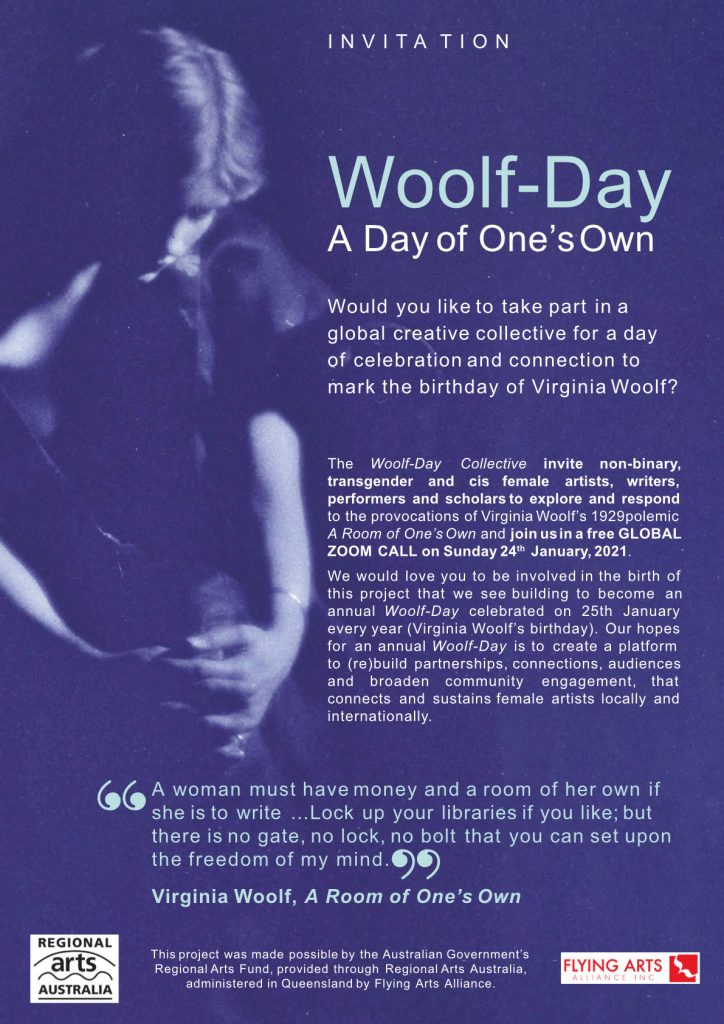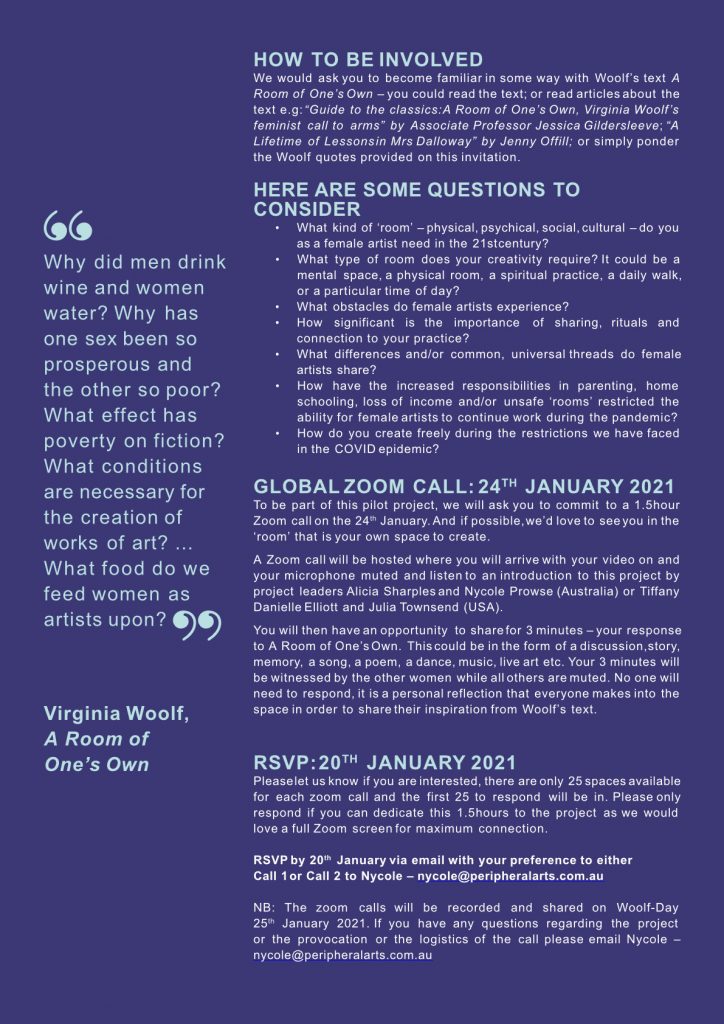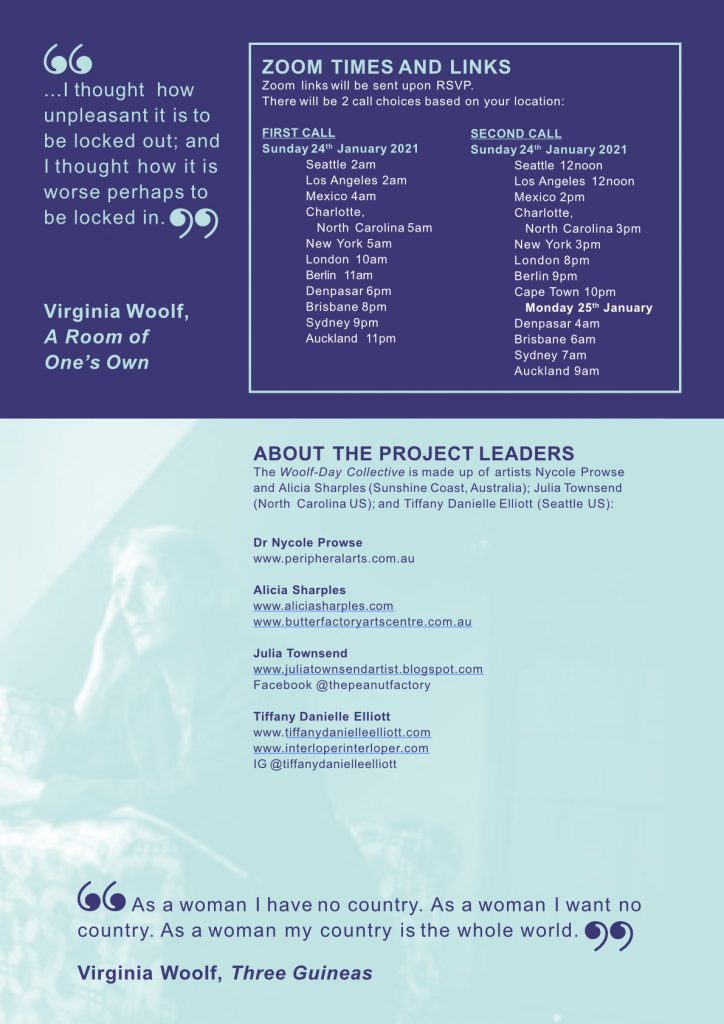June:
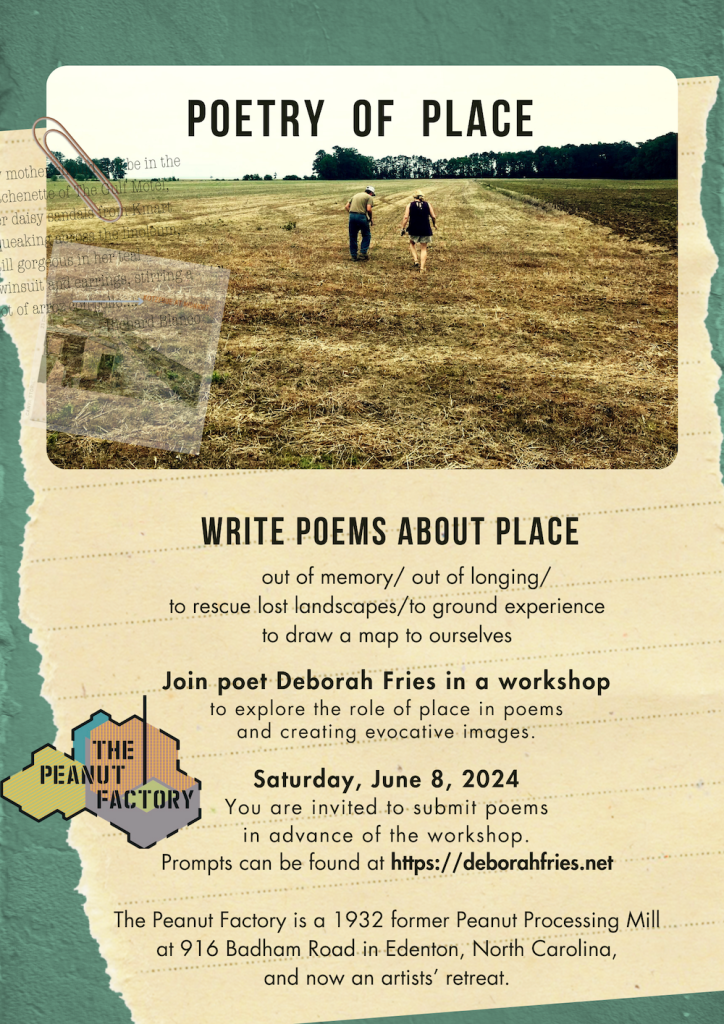
Submit poems now through June 3rd. Prompts are here.

INTERVIEW with DEBORAH FRIES
Where are you from, and how did you come to publish several books of poetry? You have advanced degrees in English. Has writing always been a passion since childhood?
I grew up in a small town in western Pennsylvania, where I was lucky to have good English teachers. In fact, my high school produced two well-known novelists of my generation – Dean Koontz and David Bradley.
For several decades I lived in Milwaukee and thought of myself as having a Midwestern sensibility. Today, I don’t even know what I meant by that, but it had something to do with the subtle beauty of the flat land, Lake Michigan and being thought of as a flyover by more sophisticated literary communities.
Wherever I’ve lived, writing has always been important to me. I’ve made a living through the written word in journalism, public relations, editing and teaching.
And although I began publishing poetry in college, it wasn’t until I moved to Philadelphia in the Nineties that I decided to get serious about publishing. I was in my fifties when Carolyn Forché selected Various Modes of Departure for a first book award and publication by Kore Press.
The poetry writing workshop that you will hold at The Peanut Factory (on the same day as the Poetry Reading) is titled ‘Poetry of Place.’ How does this place- Eastern North Carolina- resonate with you?
My maternal ancestors first settled in Washington and Tyrrell counties in the seventeenth century. I didn’t understand how deeply rooted I was in Eastern North Carolina until I became interested in genealogy about 15 years ago. What I did understand was the concept of down home, a place that my mother, transplanted in the North after marriage, rhapsodized.
Time seems fluid in some of your poems, maybe those with narratives. Memories come forward, or mesh with the present tense, or foreshadow an event. Do you think consciously about the linearity of time as you organize a poem?
There’s a lot of unconscious organization that goes into an early draft of a poem, and sometimes it works. In a poem like “Leaving Whitefish Bay,” I end the poem with an image that felt right. Consciously, it captures an anecdote that has stuck with me since the Nineties and illustrates a past when German sympathies were rampant in Milwaukee. So, I was writing this poem from Philadelphia in 2000 about something I heard when I lived in Wisconsin in 1992 that happened in the 1940s, and even today, it is a living image for me, one that represents the often futile condition of returning.
You have written about personal experiences, Marie Curie, Robinson Crusoe, among other topics. What actually prompts or inspires you to write a poem? Is there anything about your technique that you’d like to share?
I am interested in a lot of things and now appreciate the decades I spent apart from academia, although for a long time, I thought that’s where I belonged. Divorce pushed me into day jobs as a business reporter, and as a government public affairs officer for both a transportation agency and an environmental protection agency. The vocabularies of those occupations found their way into poems. There were always images from those jobs that I wanted to share: a migrating plume of underground petroleum contamination, Marie Curie visiting a Pittsburgh radium factory in 1921, the entrainment of small fish at the power plant’s intake.
What I’d share with others is an awareness that there is always a metaphor in our daily lives worth writing about. That which holds our attention offers us a poem. We don’t have to look for it. Whether it’s a car accident we pass on our way to work or a news story about feral hogs, there may be a poem within.
Over the last decade, approximately, you have become a visual artist also, with a specialty in monoprints inspired by landscapes and natural forms, such as crepe myrtle or dogwood. Visually, many of your images have a mistiness to them, devoid of people or structures. They seem to be more about the atmosphere than the terrain. Are you able to think visually in the studio, or do you verbalize (in the mind) as you create pictures?
I began college as an art major, but could never execute the work that I imagined, and switched to being an English major, where, as a graduate student in creative writing, I could edit and revise until I was satisfied with my creation. I returned to printmaking in 2000 with the mindset that I was not invested in the outcome, that making art was only a form of recreation.
But beginning in 2018, I was offered a solo show, and another, and another, and today I think of myself as straddling both visual and verbal forms of expression. And wanting to combine them.
The first time someone called my artwork atmospheric, I was puzzled. In my mind, I am grounded in the literal. I do have some work with structures, but often in the distance. I’ve worn glasses since I was seven, so the way that details are forfeited is normal to me. In the studio, I am thinking visually. There are no words in my head about where the horizon should go or how to mix the right green.
Is your workshop at The Peanut Factory on June 8 open to beginning poets, or people who have already been to some workshops or creative writing classes? What kind of students do you usually teach?
My workshop at The Peanut Factory is open to beginning, intermediate and advanced writers. We can all benefit from understanding why a place is important to us, what it represents, and which selective details can make our subject evocative.
In recent years, I have offered multi-genre workshops to adults who had the option of responding to thematic assignments in poetry or prose.
You’ve had an impressive career as an editor. Can you tell us about editing the anthology Powder: Writing by Women in the Ranks, from Vietnam to Iraq, or another publication/collection that you enjoyed? …and if/how it feeds into your own creative work?
I was not an editor of Powder, just a contributor.
In 2020, I edited a memoir, When the Alphabet Comes, the author’s story of his fall from grace when it was revealed that he’d accepted a bribe as the coach of men’s basketball at U Penn. Our accidental meeting in 2018 became an ongoing relationship that has not only introduced me to other editing clients in the world of basketball – it’s also expanded my interest in helping new writers find their voice.
An excerpt from “Leaving Whitefish Bay”
This is where I lived before I left for good: in an undistinguished
house on Diversey Boulevard, where one night a transformer blew
and showered my lawn with sizzling oil and bits of fire, where
I planted mallow and cosmos and day lilies after the cleanup;
where I lived next to a woman who told me the story of her uncle,
a German, who left Whitefish Bay to be a Nazi and disappeared forever.
He told her to wait at the beach, that one day he would return from the sky,
posted home in uniform, a crisp package carried by a clean, white parachute
who’d come back soon, gliding lower and lower over the dark blue bay,
landing in the sand at Klode, greeting her in English as if nothing had changed.
March-April-May project is ongoing:
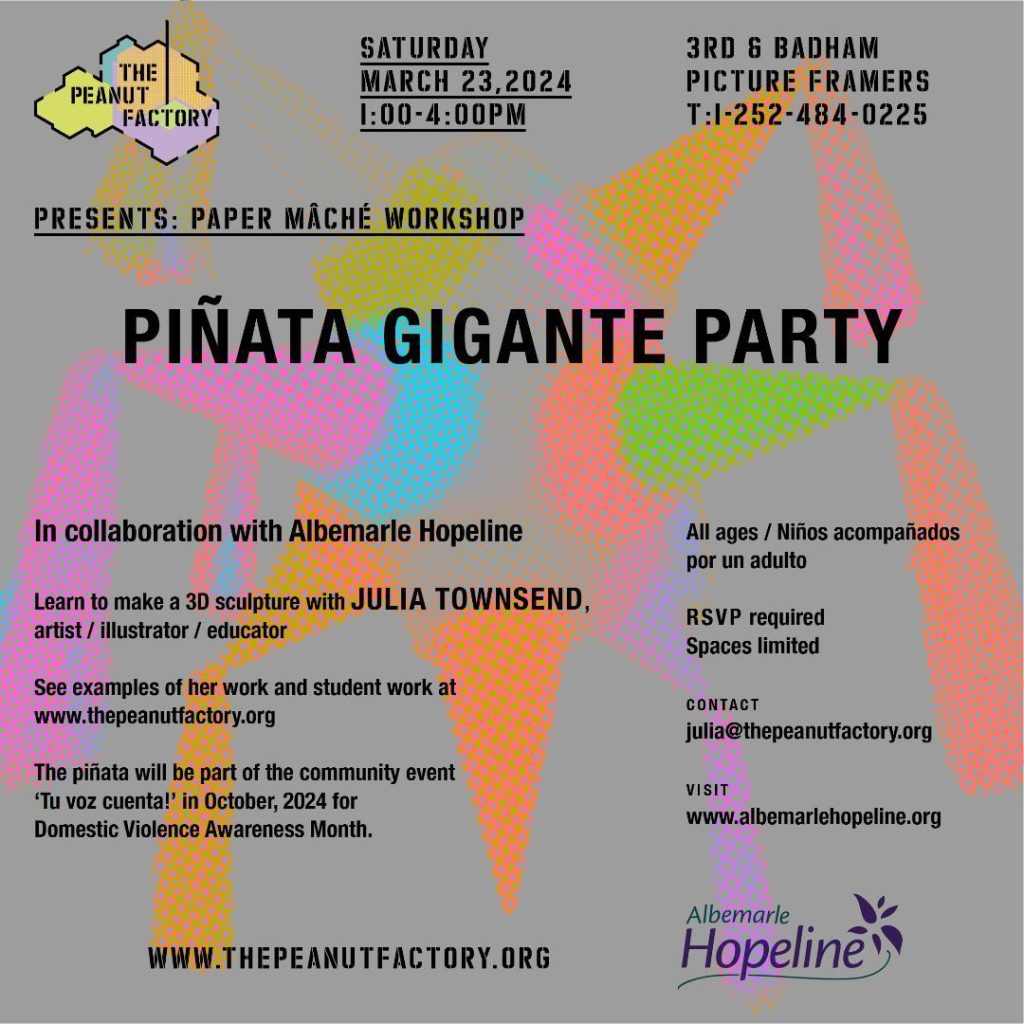
The Pinata Gigante in progress as of May seen in the photo below! Thanks to workshops on April 17, May 1 and May 8 with students from the Boys and Girls Club here in Edenton. The cones on the floor will soon be attached to the giant sphere…then painted and crepe paper added. …later, it will be filled with sweets.

Painted paper-maché sculptures by Julia Townsend:
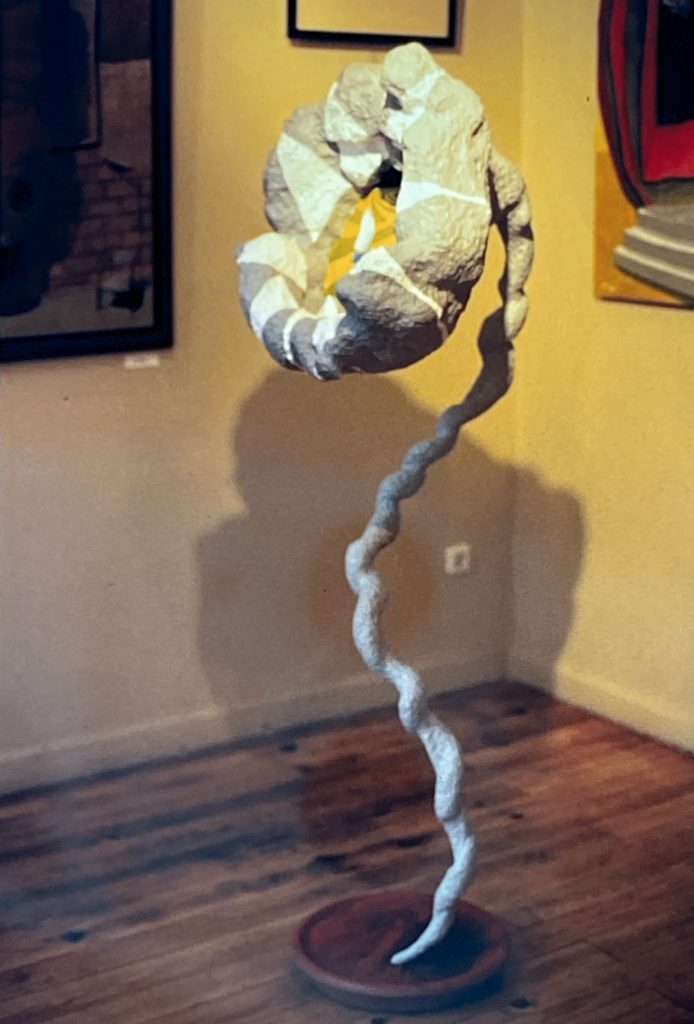
The Nuclear Flower Series: acrylic painted on paper-maché pulp, over wire and styrofoam armature, plaster and cement base
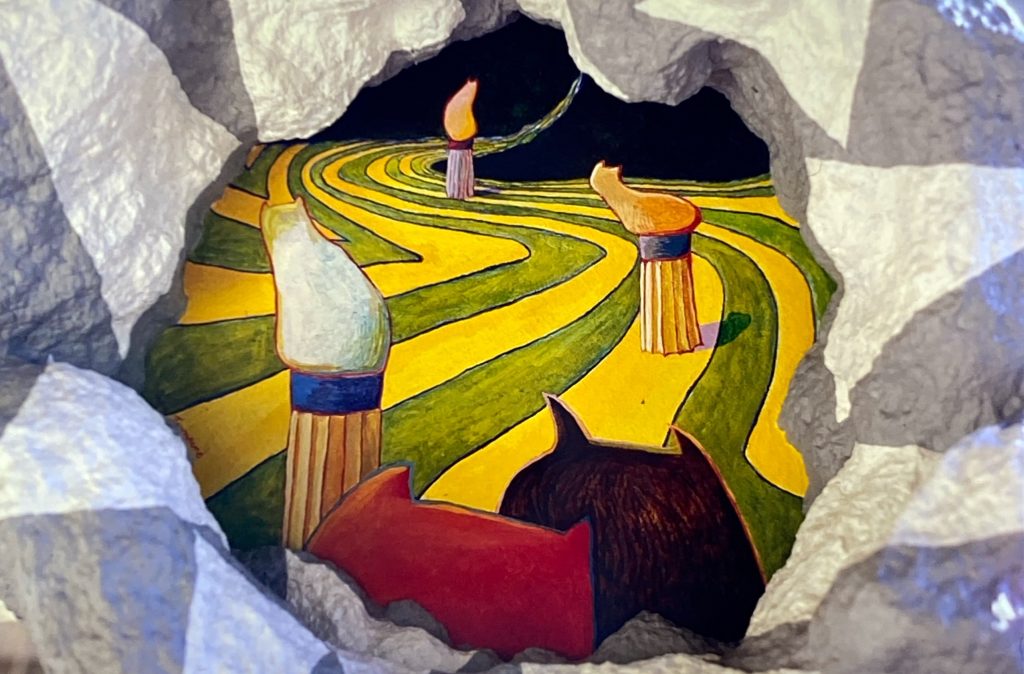
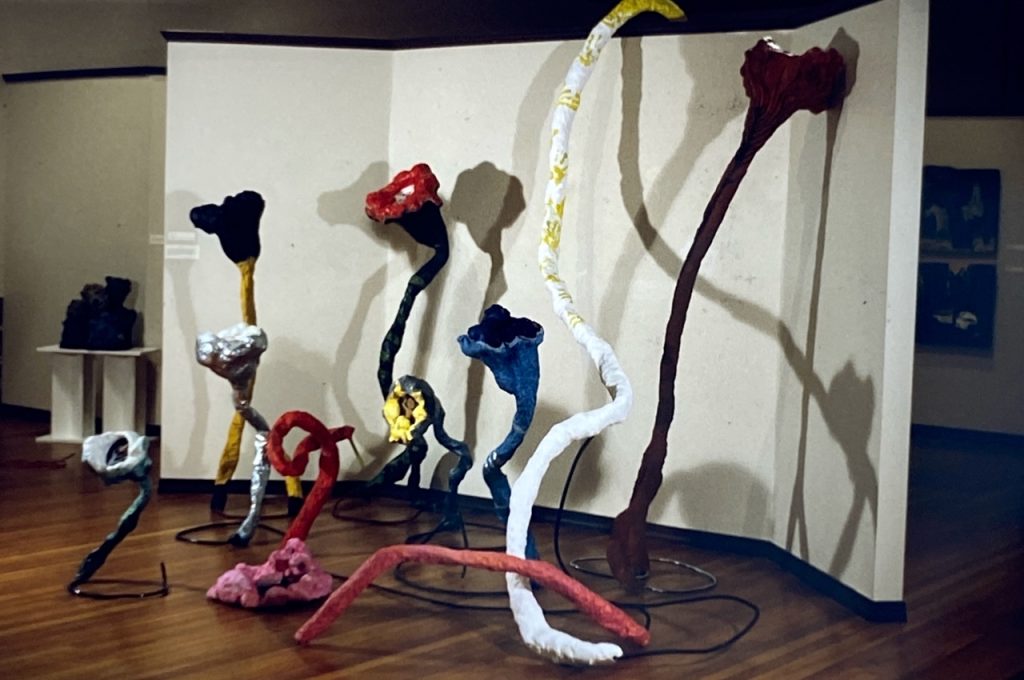
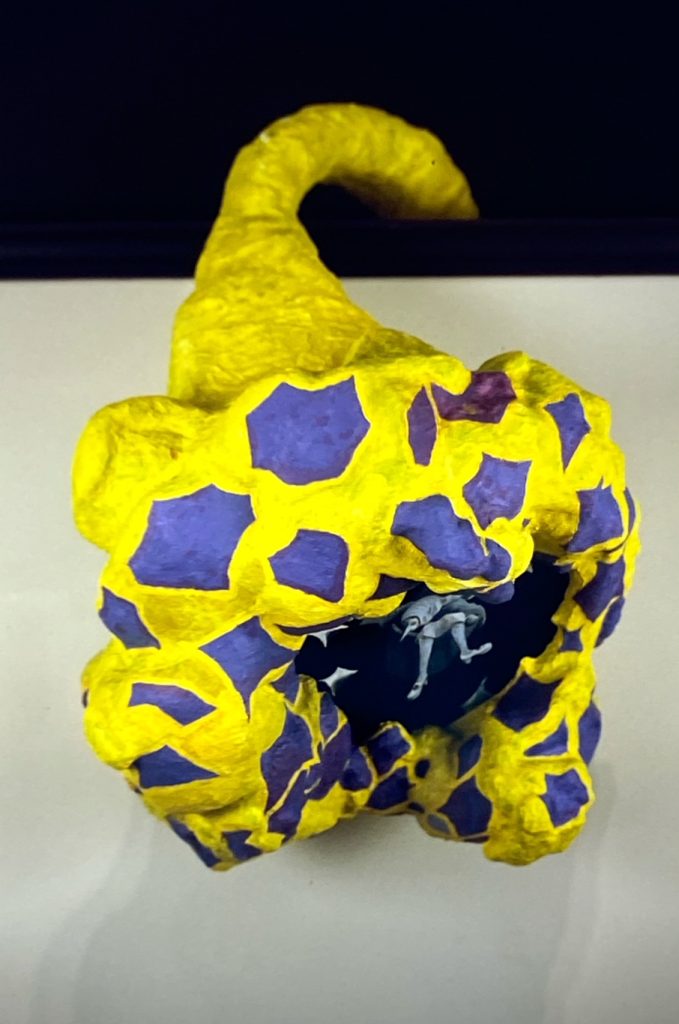
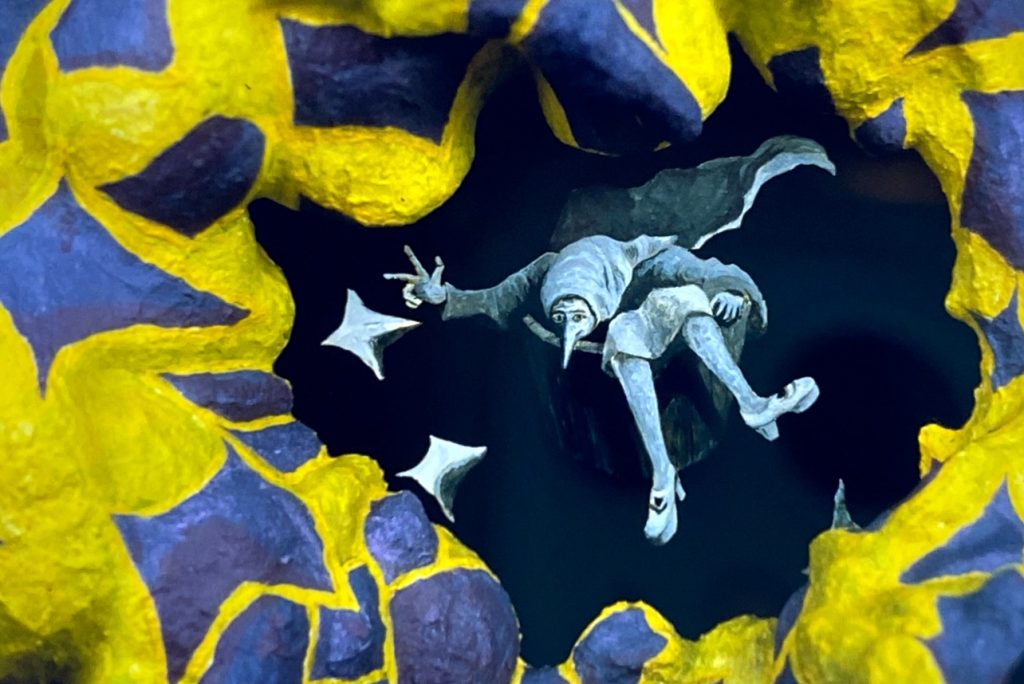
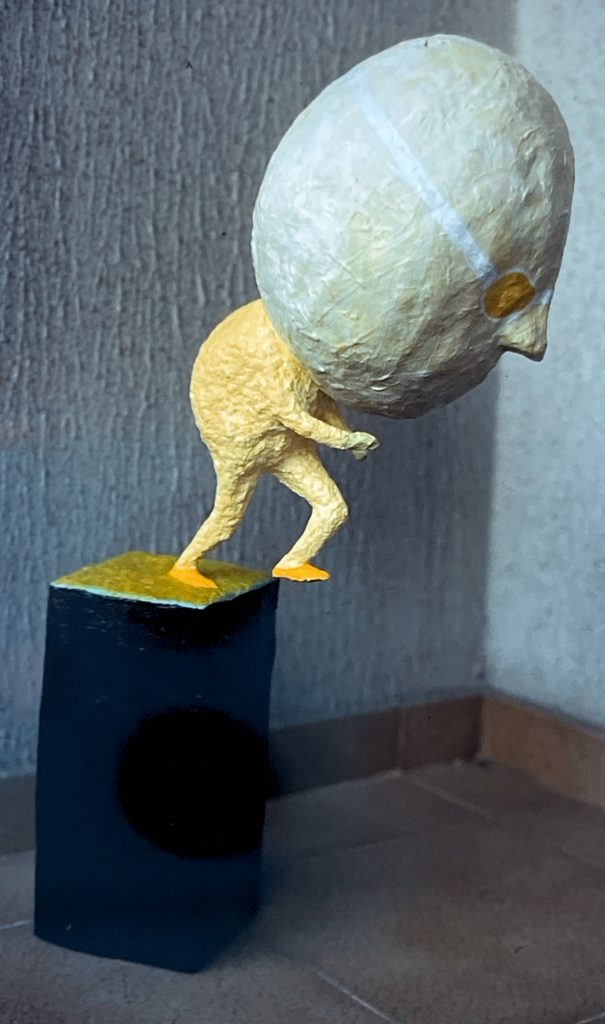
Running Man – paper-maché, paper pulp, over armature, plaster of paris base
Student work – teenagers
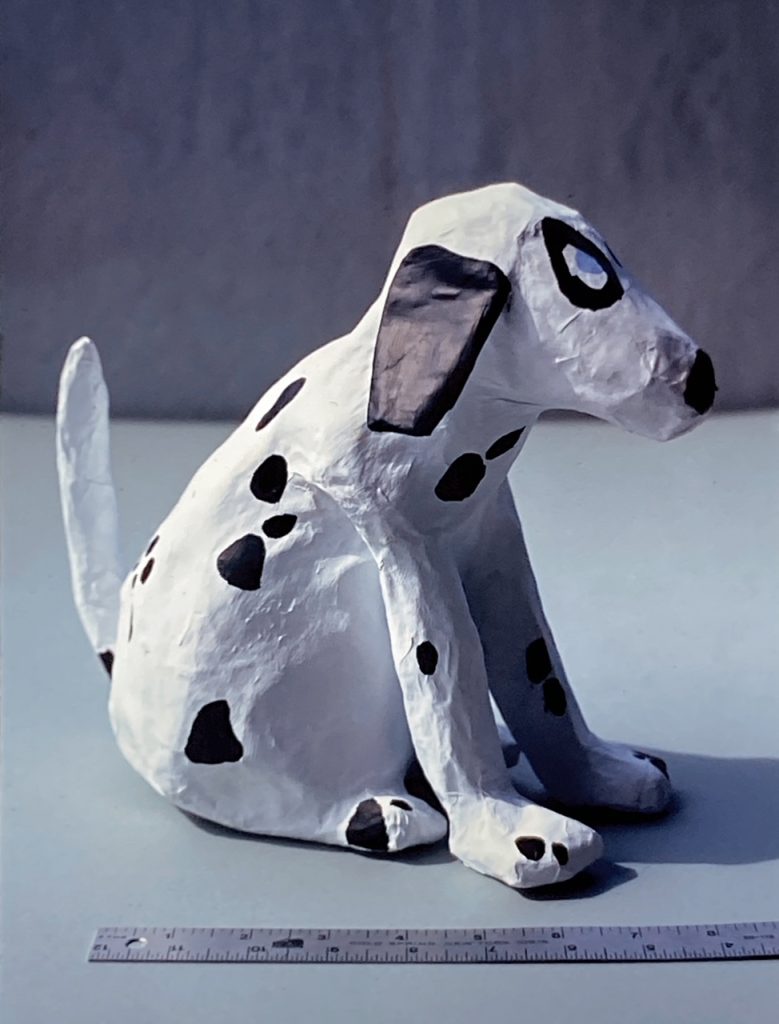
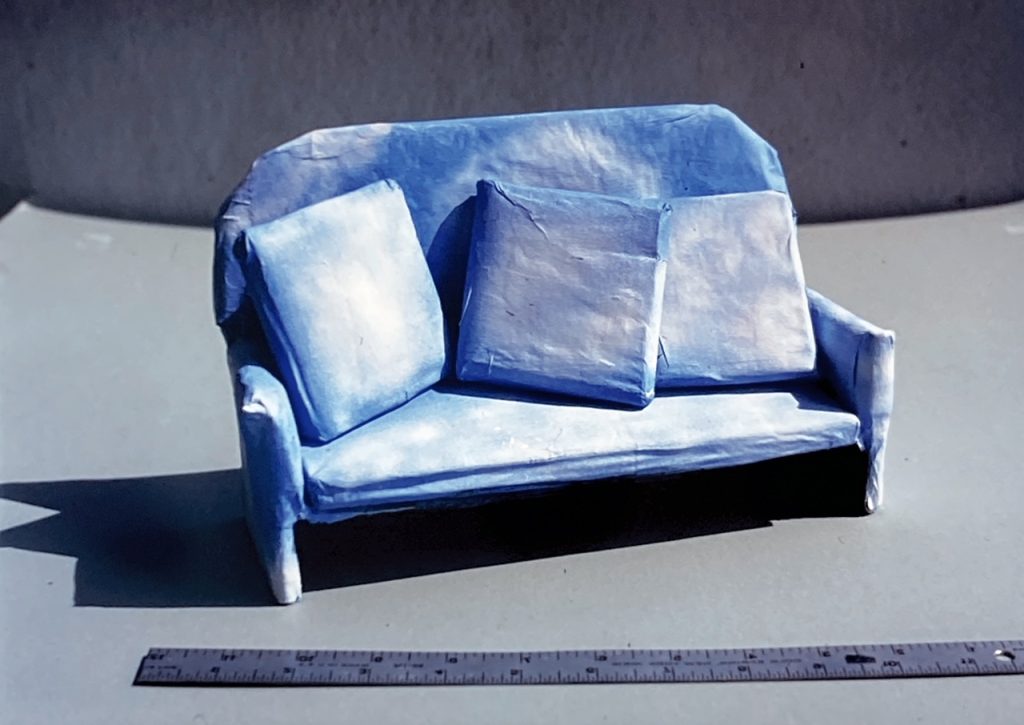
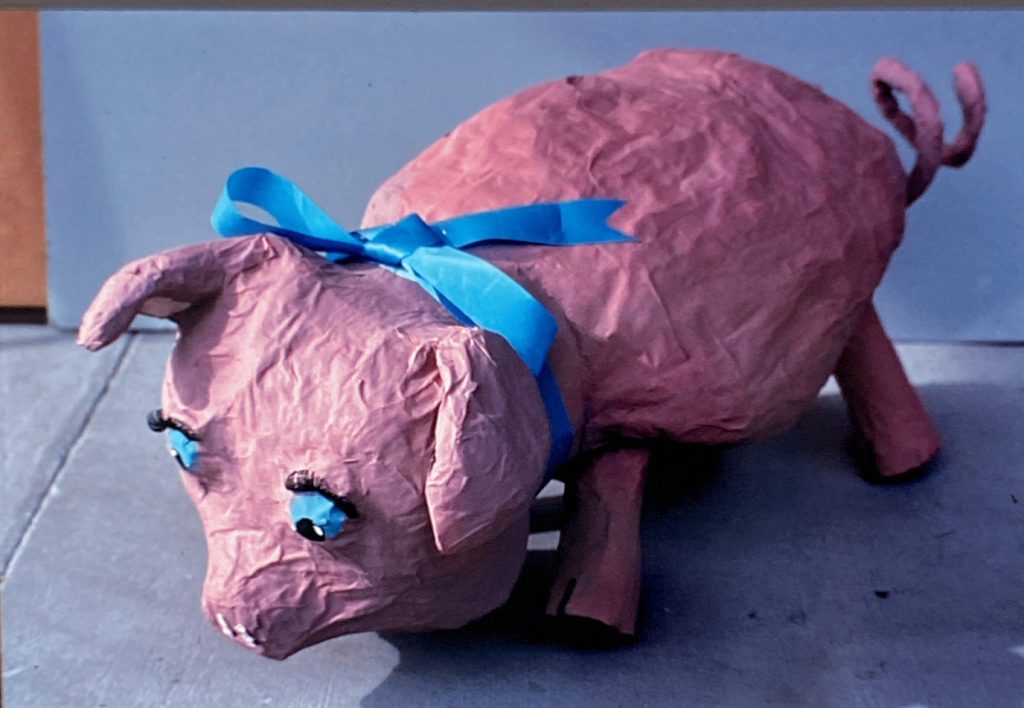
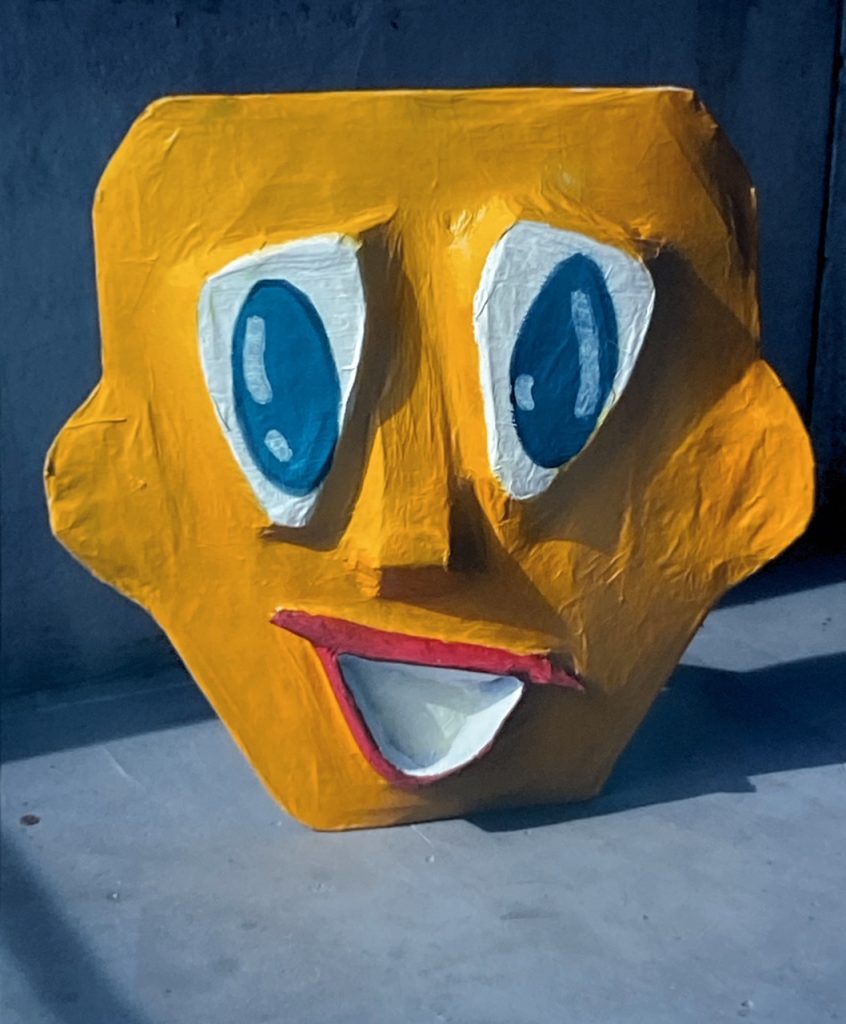
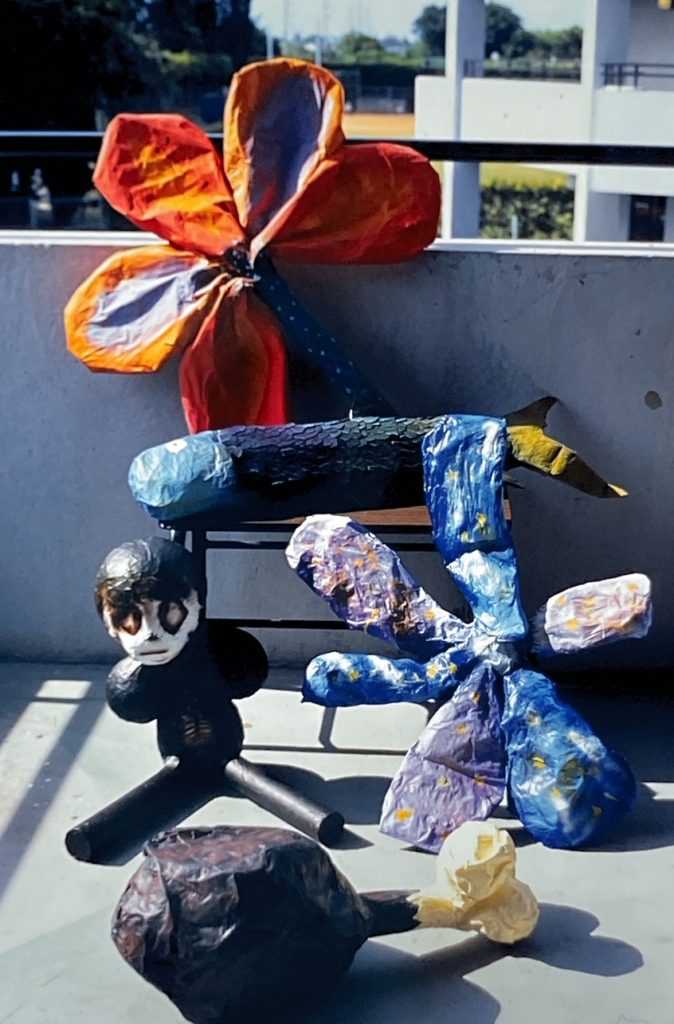
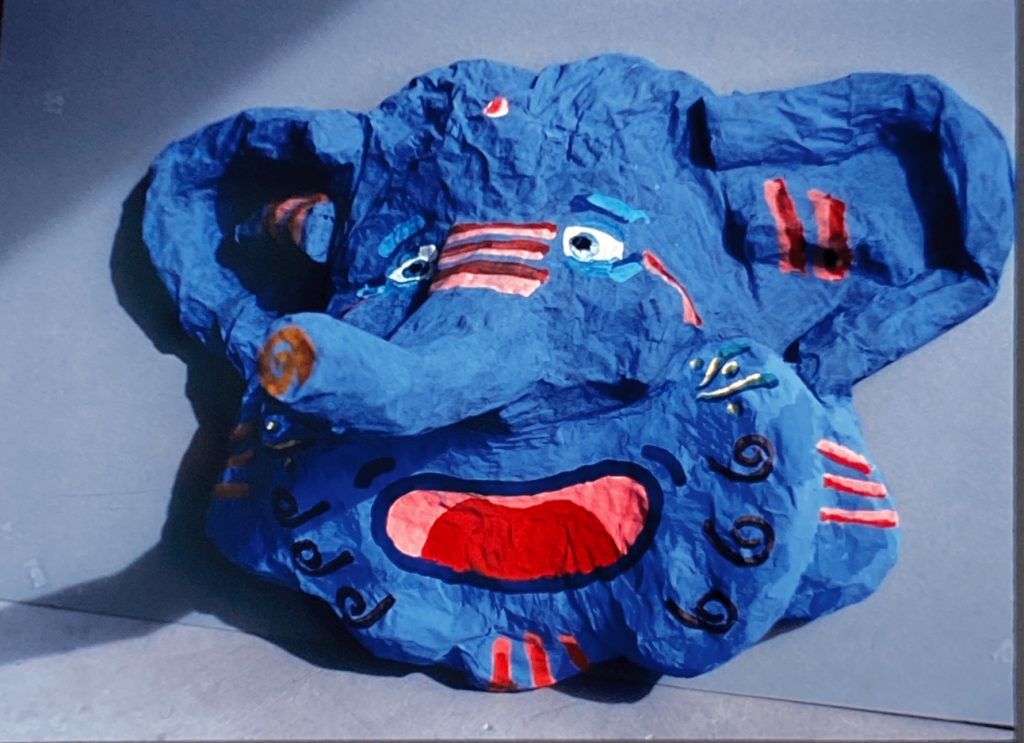
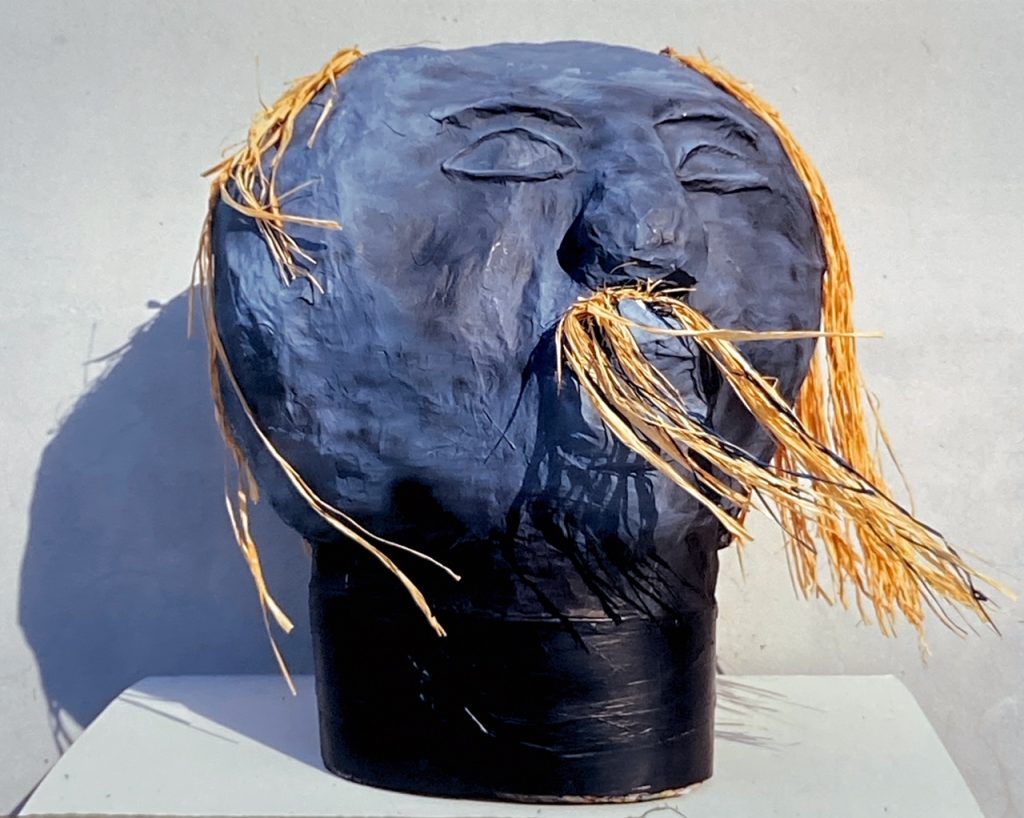
FEBRUARY:
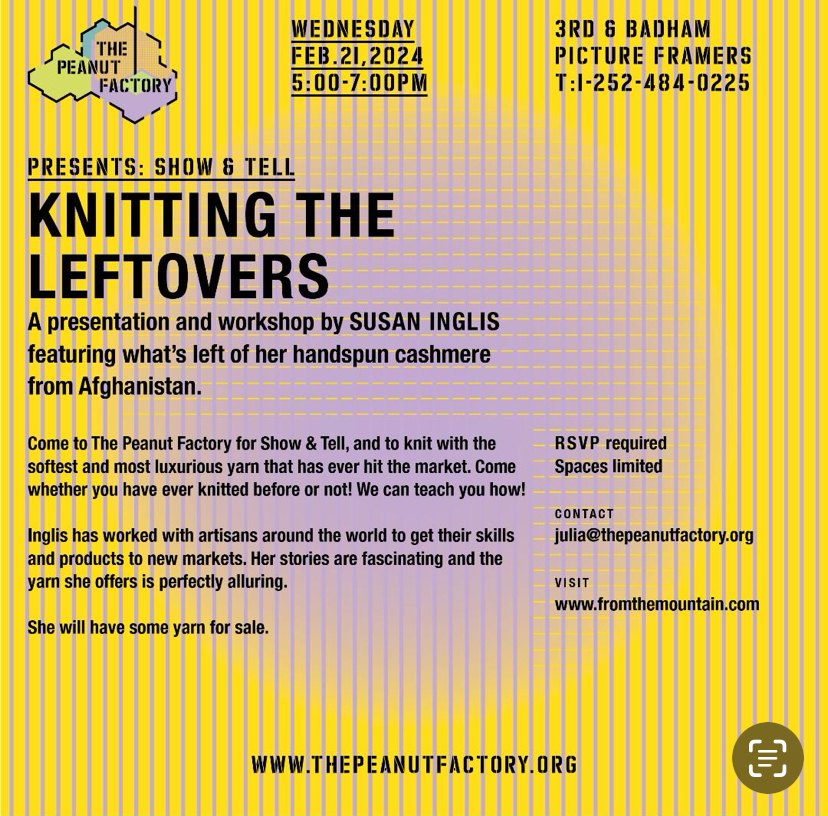
Visit https://www.fromthemountain.com/ to find out more about where the yarn comes from.
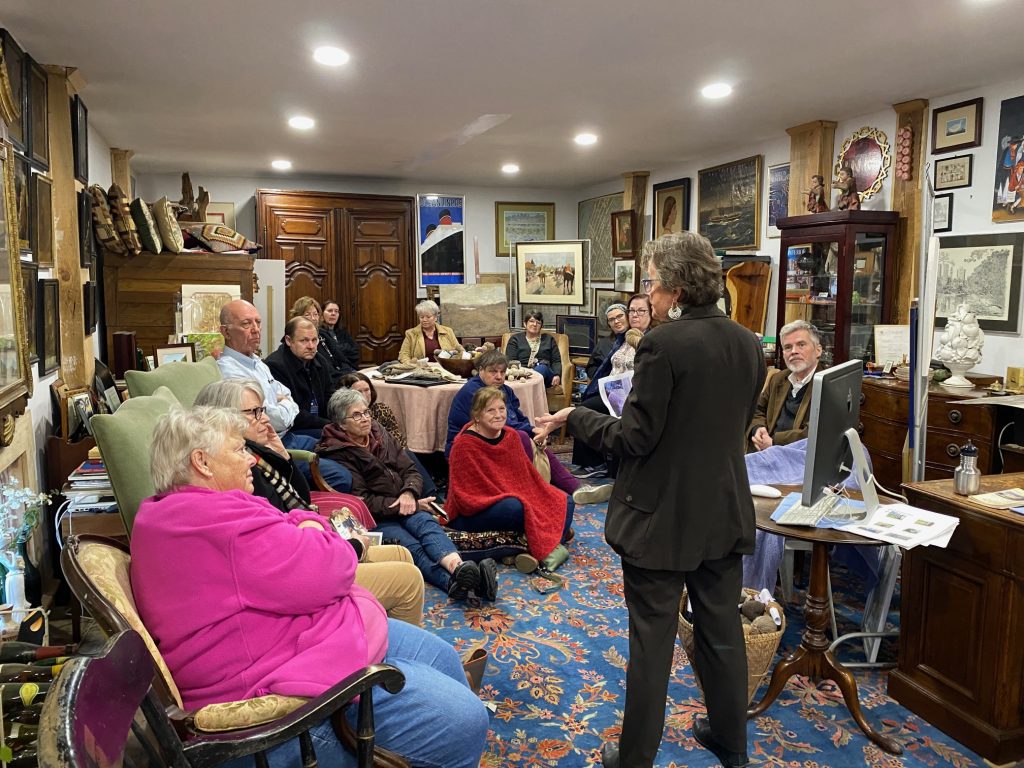
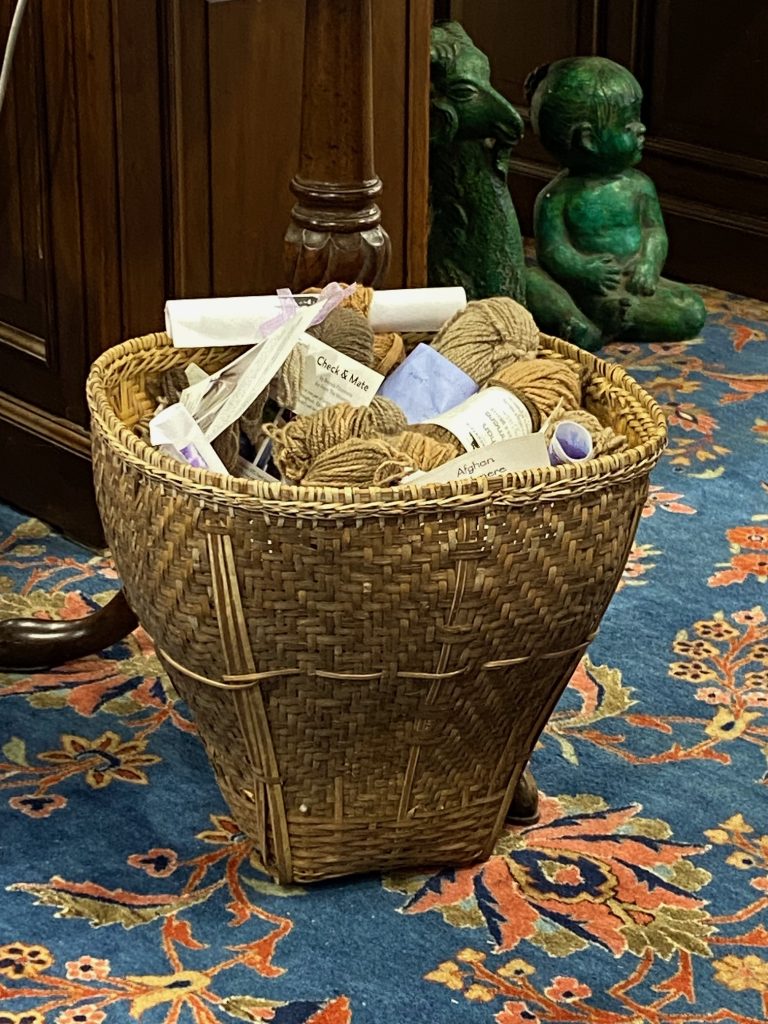
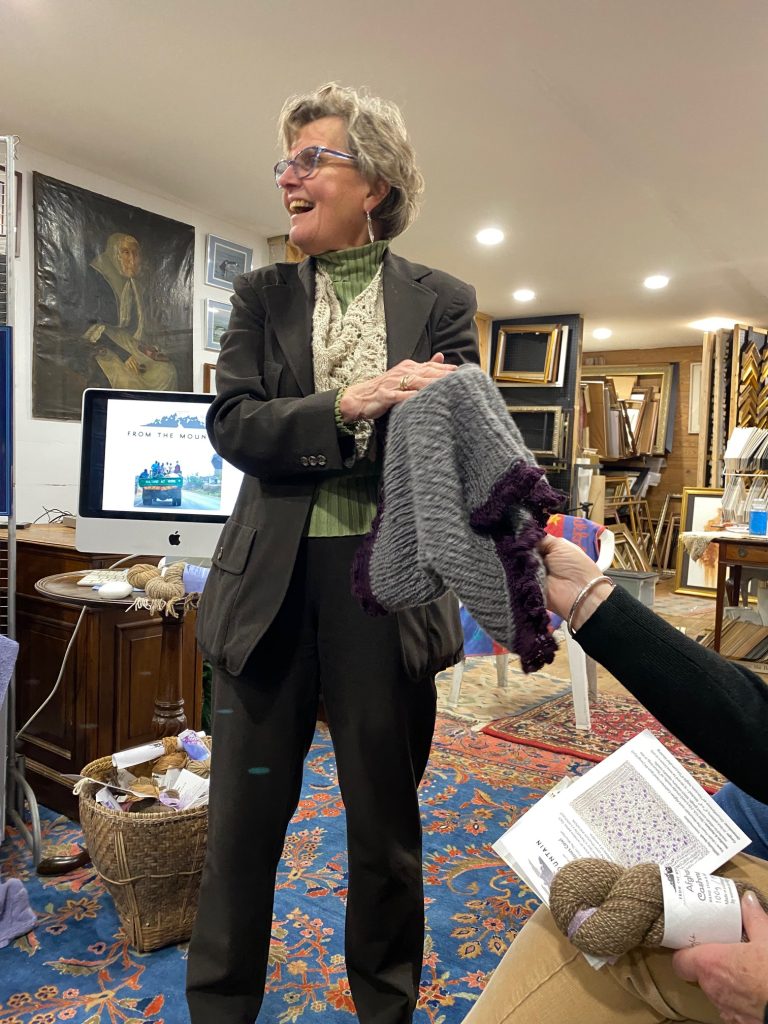
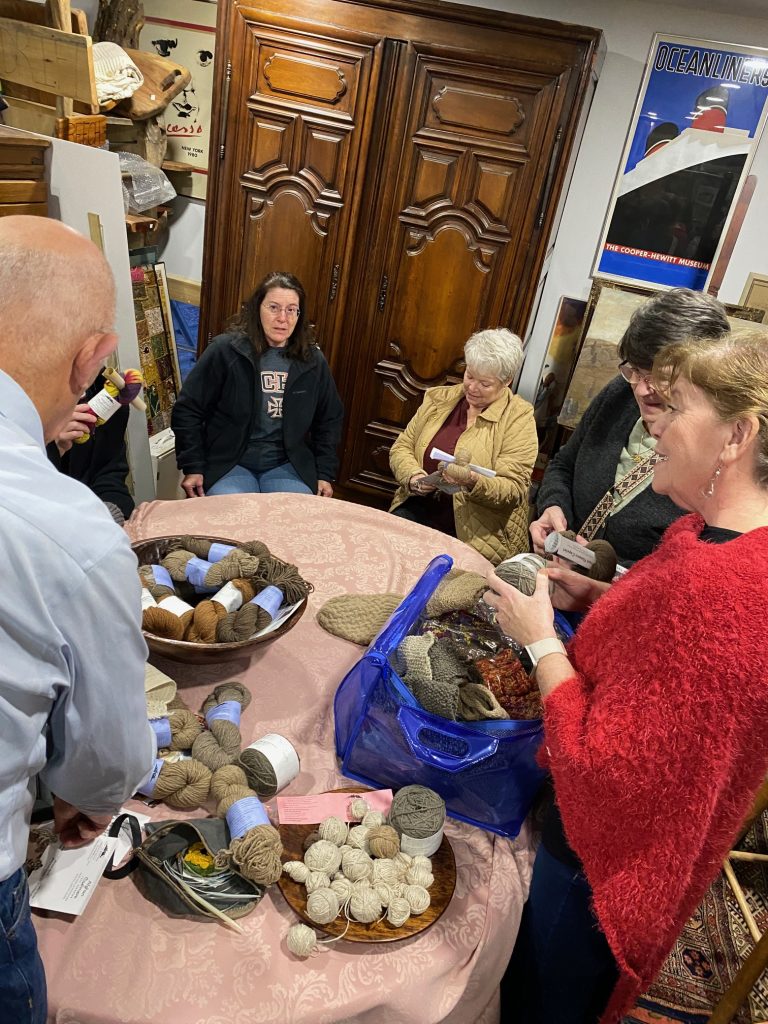
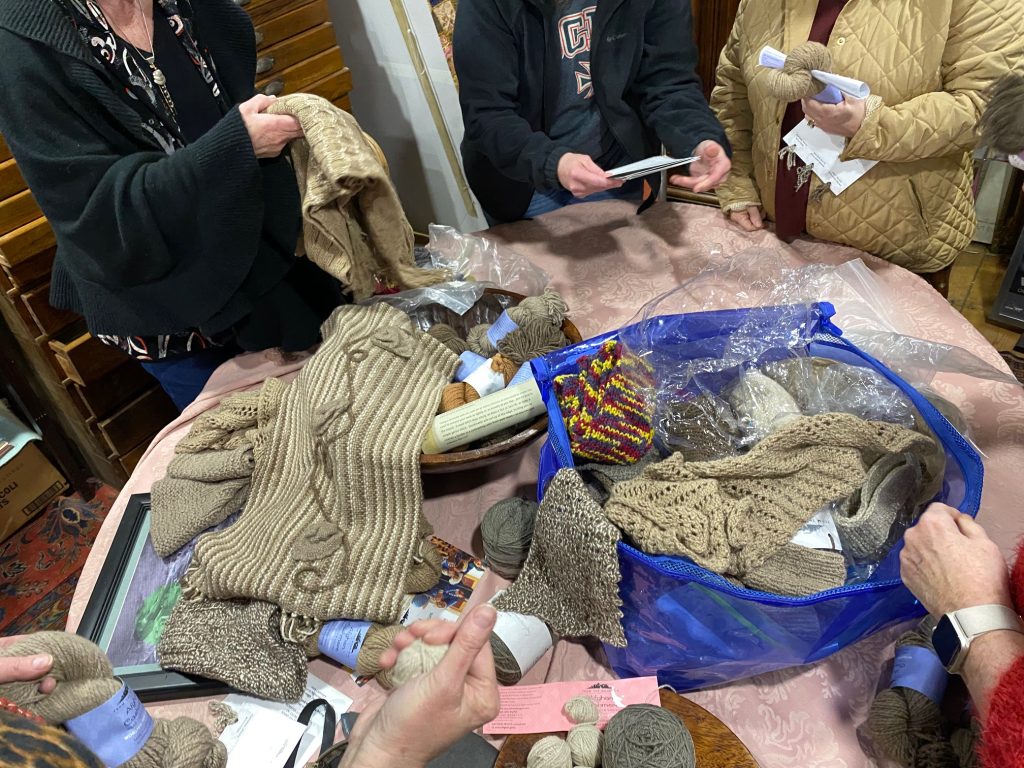
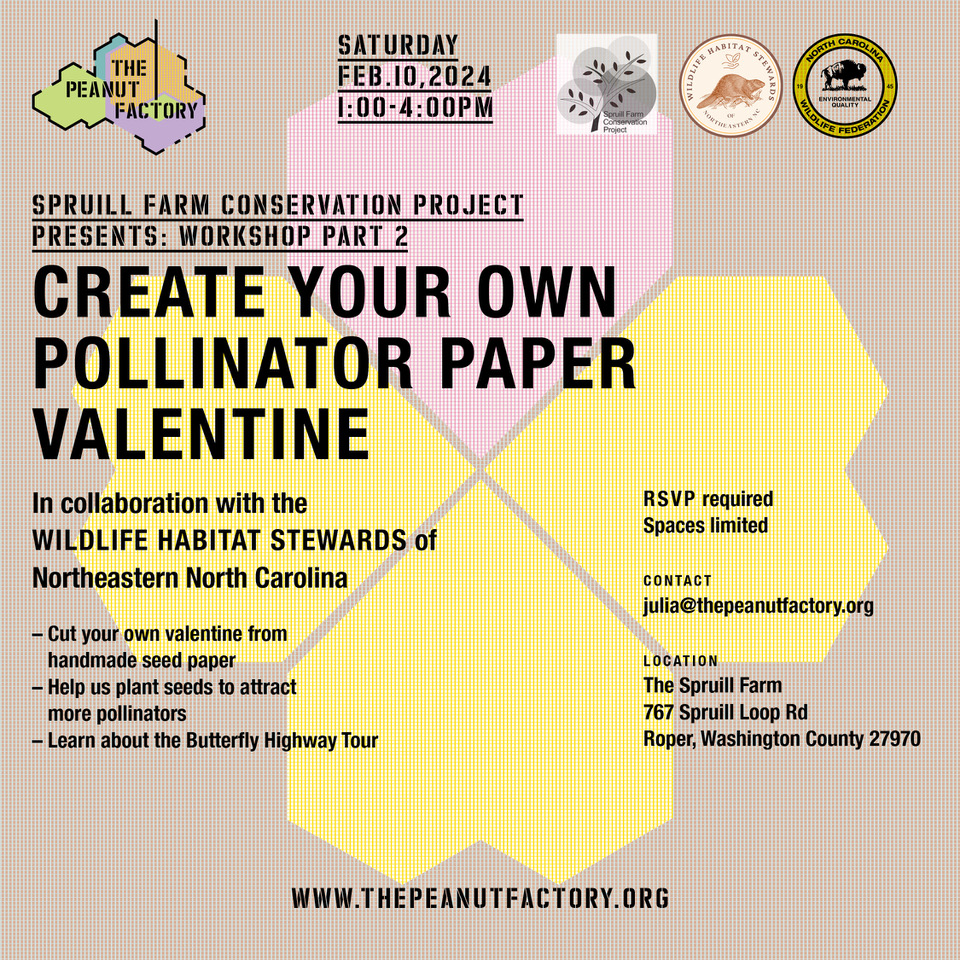
JANUARY:
The Peanut Factory announces a series of monthly workshops for 2024, beginning with a hands-on papermaking workshop with artist Sarah Ann Austin MFA, founder of the Legacy Prints and Paper Studio:
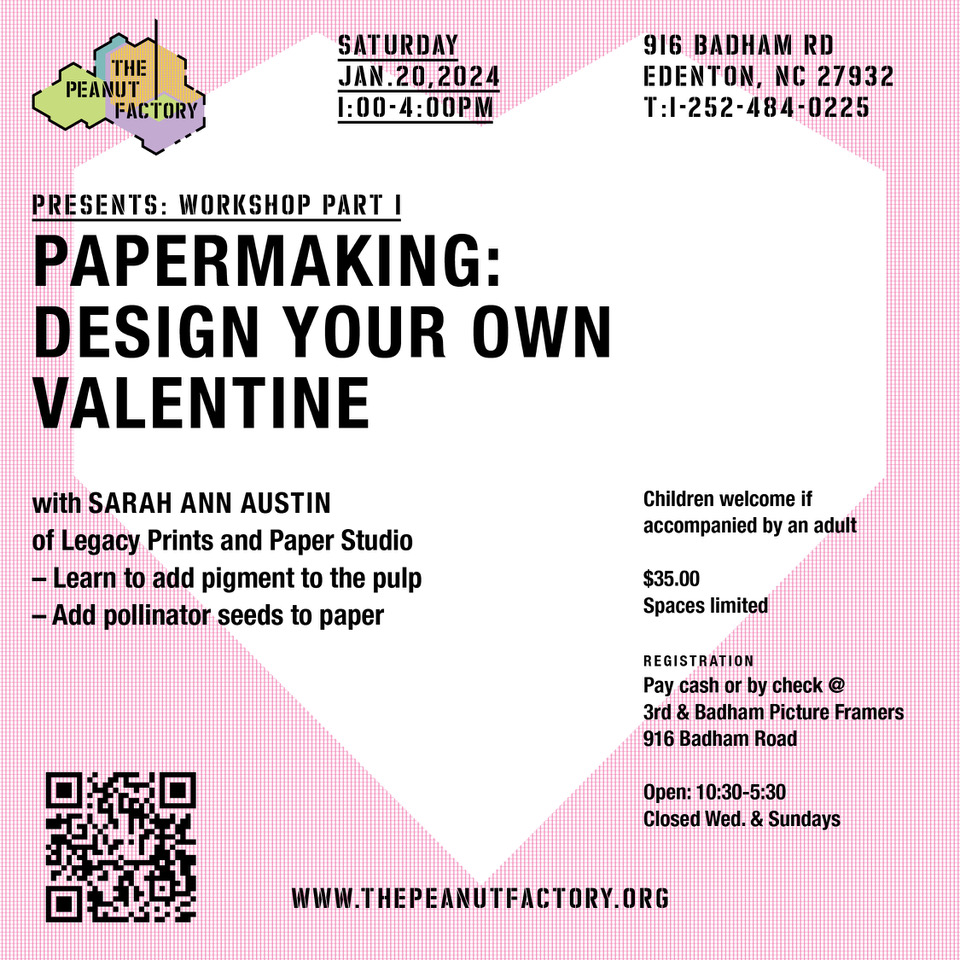
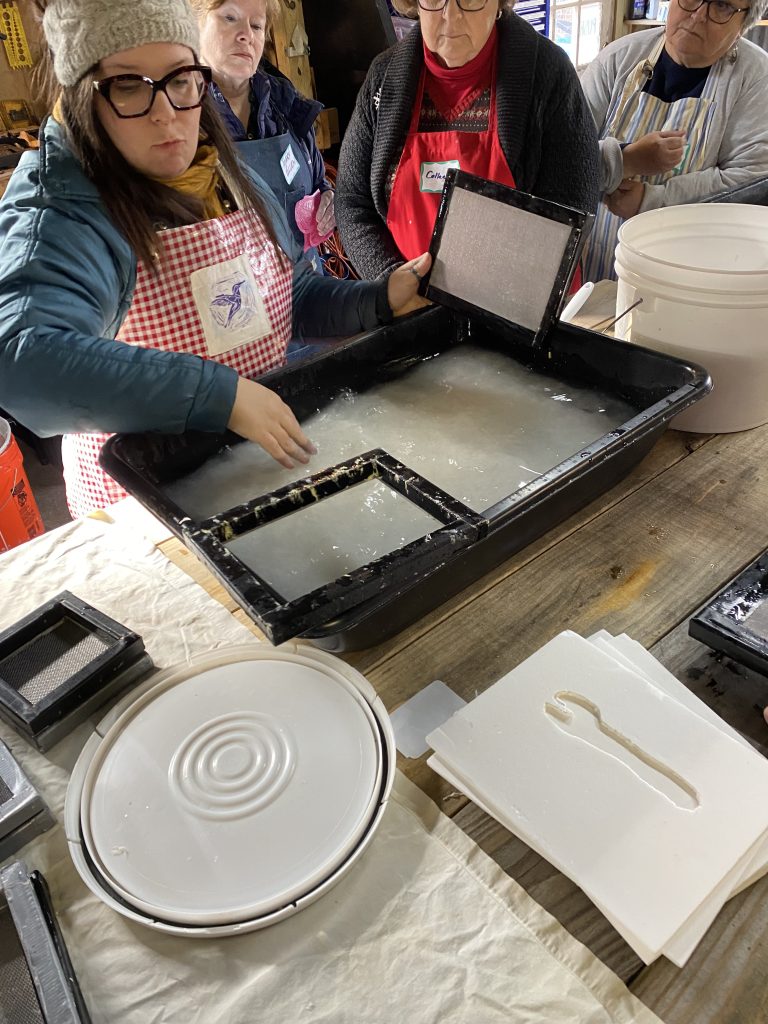
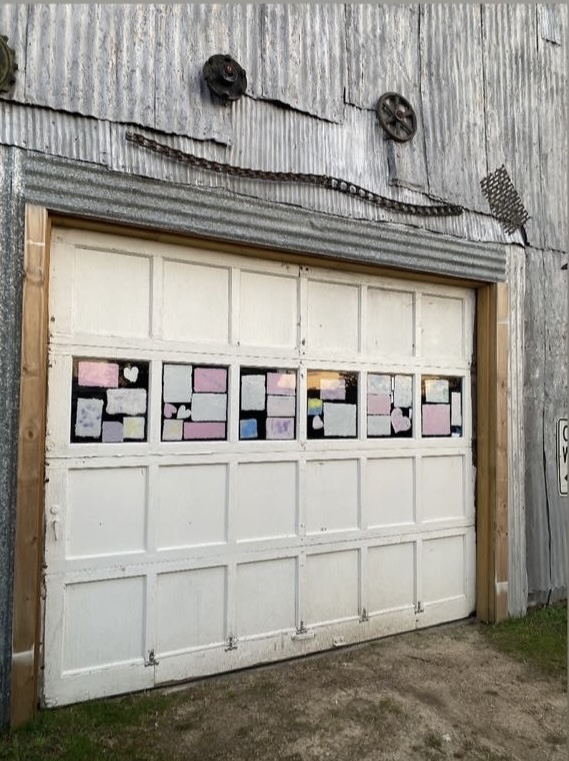
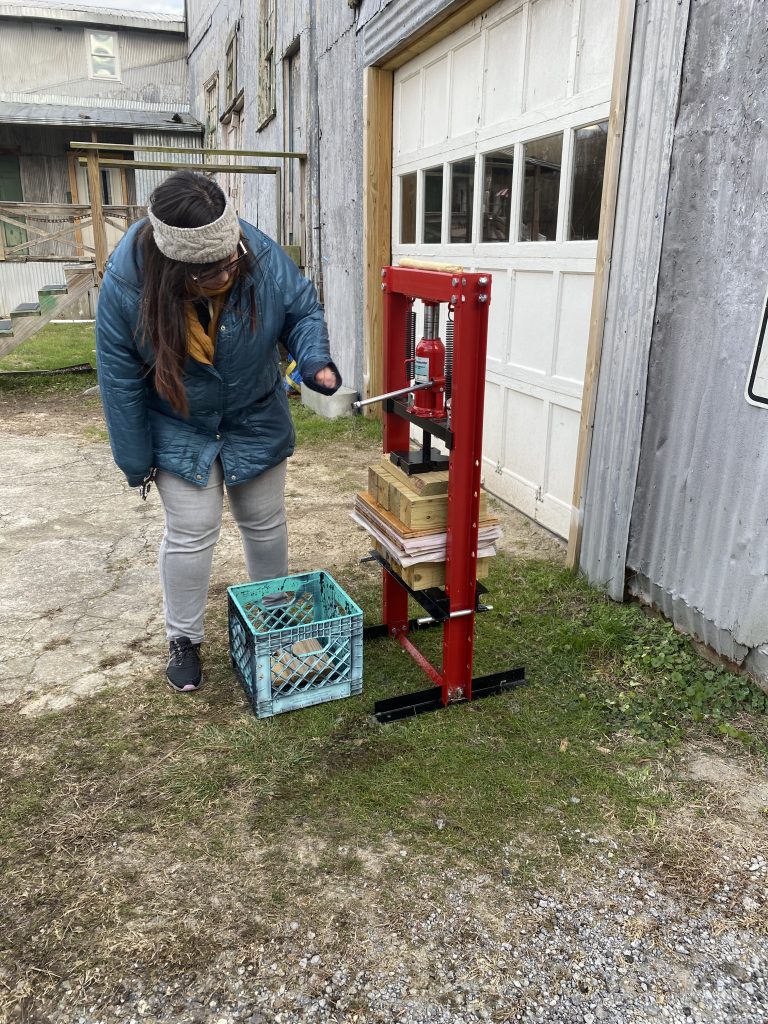
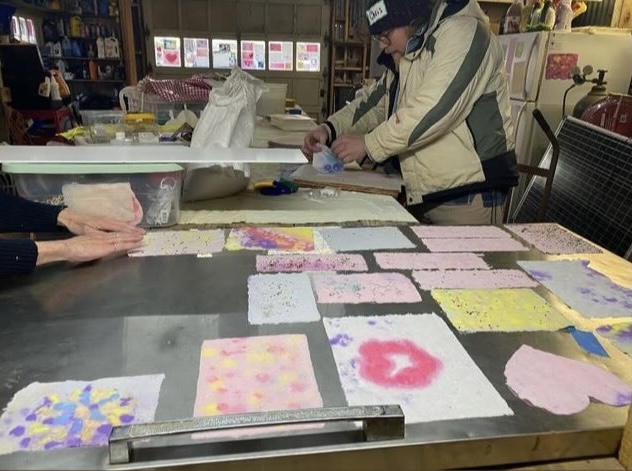
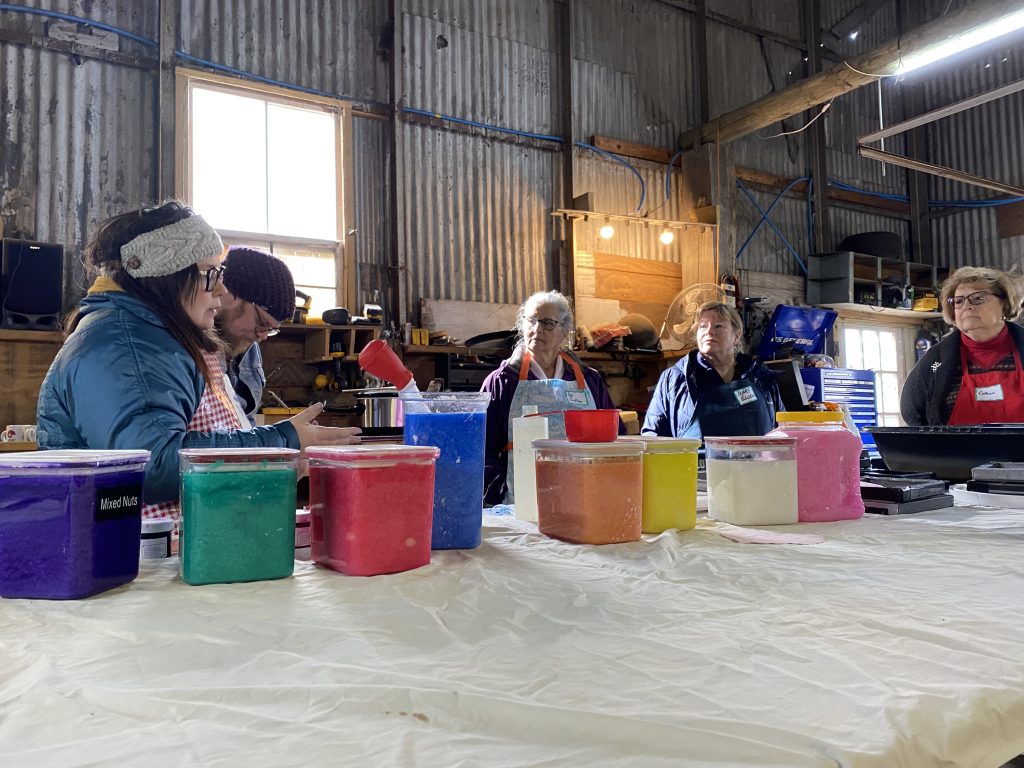
Sarah Ann Austin is a Raleigh based mixed media artist who makes historical photographic prints onto her hand crafted cotton rag, abaca, and kozo papers. Sarah Ann’s technical and historical knowledge of traditional crafts is used in her everyday practice creating paper, prints, brushes, installations, and art objects that wonderfully capture the depth and many uses of natural resources.
“My work explores the complex relationships between craft culture and fine art through process and conceptual parallels of memory and object recognition. I’m drawn to objects that hold a memory space of my childhood trauma. I see them as objects that can link to a collective past. I reconfigure these objects through historical photographic methods with both contemporary and traditional papermaking techniques. In creating photograms of objects, I am capturing their distinct likeness and reclaiming them into new images that are beautifully and ornamental.”
Born in Flint, Michigan, Sarah Ann Austin received a BFA in Visual Communications and Studio Art from The University of Michigan and a MFA in Studio Art focusing in All forms of Photography, Sculpture, and Papermaking at the University of Alabama. She has taught at universities and community centers since 2012 and has exhibited her Art in various group and solo exhibitions throughout nationally including: the Ogden Museum of Southern Art, Birmingham Museum of Art, Flint Institute of Art, Detroit Institute of Art, Oklahoma Museum of Modern Art, Gadsden Museum of Art, Bradley University, Un. of Michigan Museum of Art to name a few. Sarah Ann has received grants and fellowships from Ohio Arts council, FotoFocus, Society for Photographic education, AL Arts Council, University of Michigan, University of Alabama, Greater Flints Arts Council, United Arts Council and more. You can learn more about Sarah Ann’s work with non-profits and upcoming classes at the Crafts Center at NC State, Artspace NC, Art-For-All, Baltimore Clayworks, and with Raleigh Arts on her website and Instagram
2023:
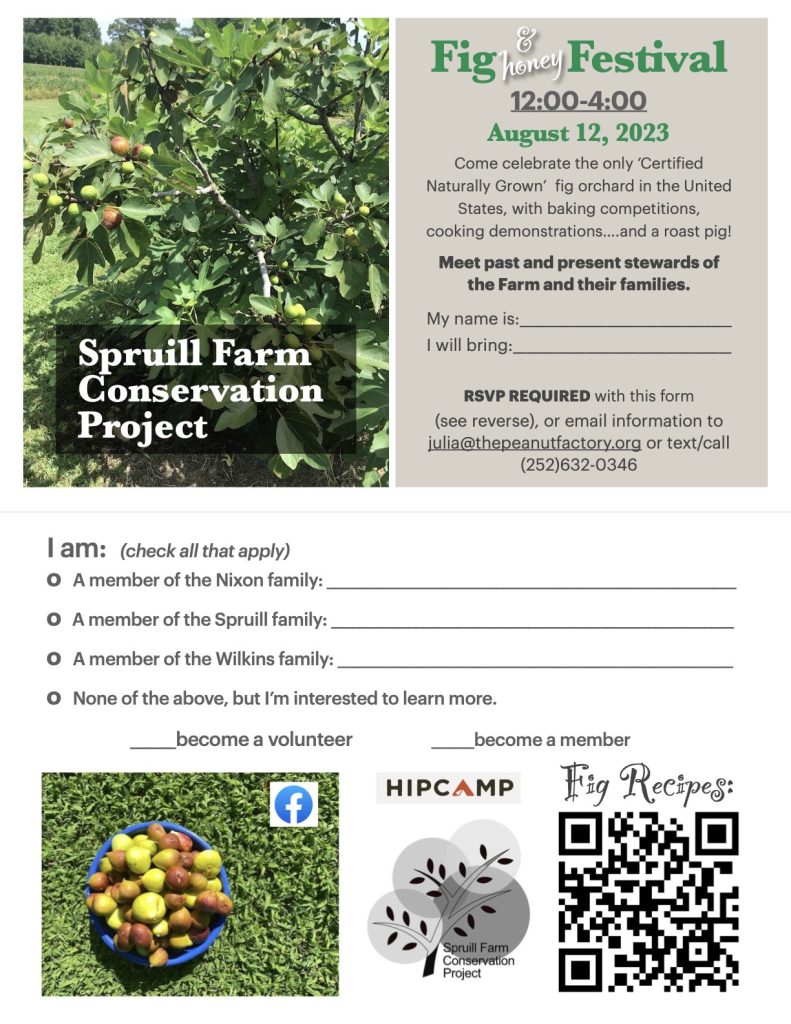
Past
2023
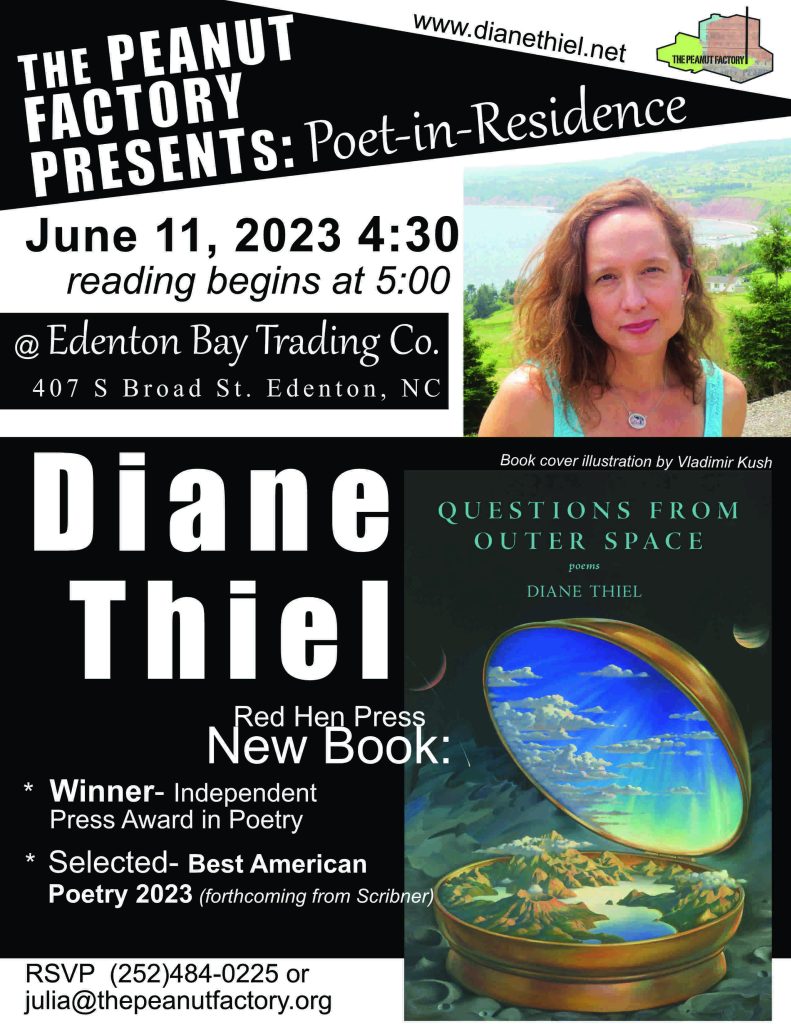
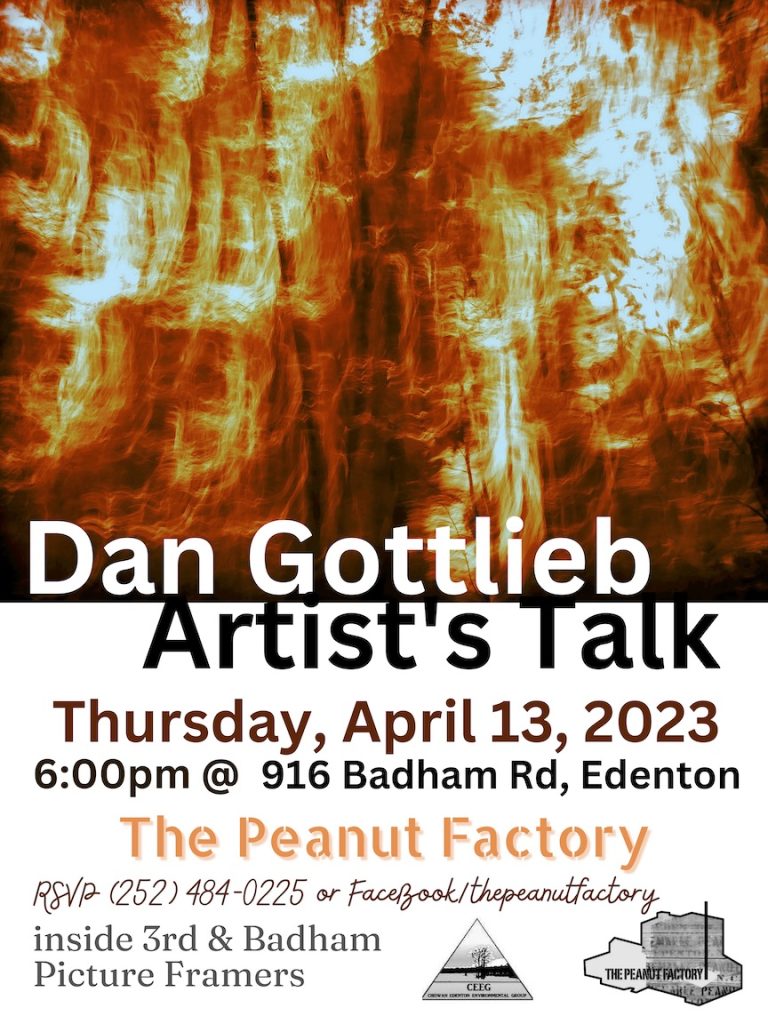
2022
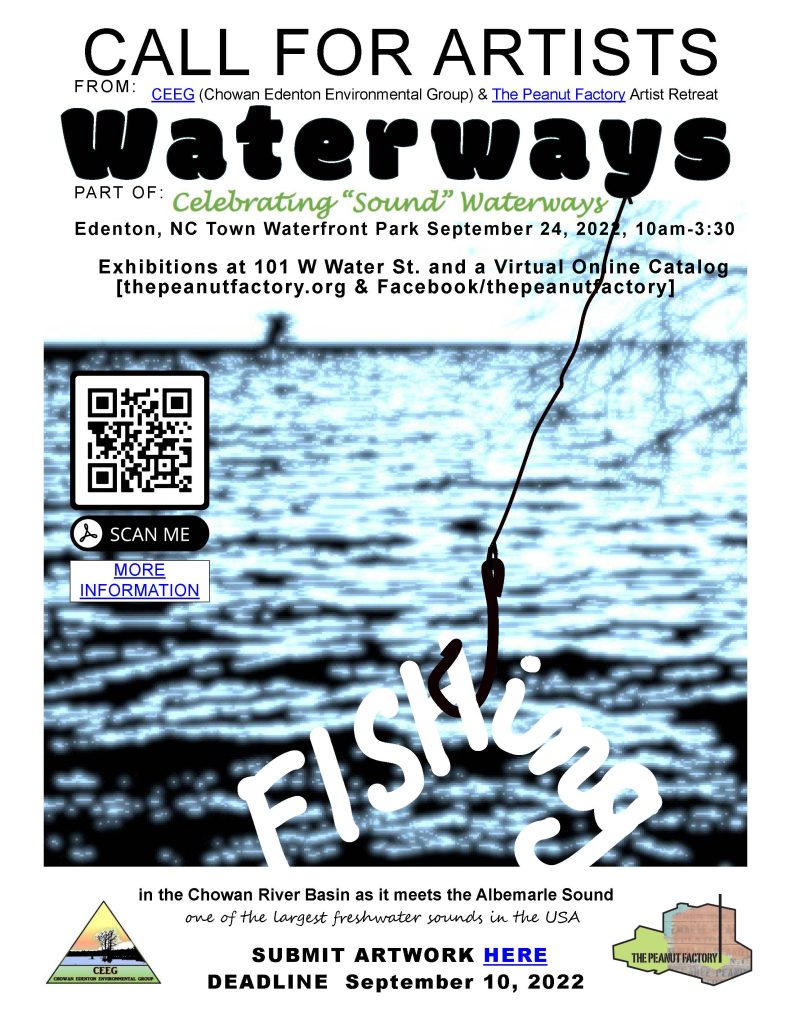
2021
